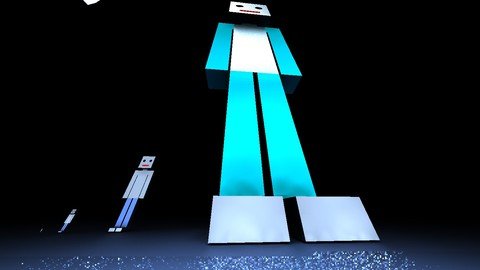Turn Ideas Into Patents For Beginners
- 24.01.2023
- 2

Published 1/2023
MP4 | Video: h264, 1280x720 | Audio: AAC, 44.1 KHz
Language: English | Size: 250.41 MB | Duration: 0h 31m
Research, Drafting and Application for Patents
What you'll learn
Determine if an invention is patentable
File a provisional patent application
Gather information for formal application
Research your invention, choose the type of protection
Draft a patent application
Utility patent
Provisional patent
Design patent
Specifications, claims
Espacenet: free access to more than 130 million patents worldwide
Requirements
No requirements
Description
Patents or exclusive intellectual property right to an invention are used to protect inventors and prohibit others from copying, making and selling researchers inventions. Patent holders give permissions to companies and individuals to fabricate, administer and sell their inventions by issuing a patent license. Many scientists and engineers do not have patents not due to lack of inventive ideas, but because they do not have previous experience with applications for patents. Similar to the book writers, who get royalties from publishing their books, inventors are entitled for remuneration. Many institutes and universities do not provide format trainings for their students and research on how to draft and file patents. Institutes provide conditions, lab space, equipment and funding to conduct research. Students, engineers, postdocs and professors working at institutions must prepare their patents at their institutions. Typically, any profit from patents is to be split between the employer and the employee. If inventions are open to the public, published in academic or popular journal, presented in a talk, printed on a poster, it is accepted as state-of-the-art. In this case an invention cannot be patented. Firstly, inventors should determine whether a patent can be granted. Before starting a patent application researchers should determine if their inventive idea is new. Several requirements include novelty, utility, enablement, non-obviousness and patentable subject matter. Fortunately, to search for state-of-the-art or prior-art inventors are not longer required to go to a patent library and study similar patents manually (to determine if an idea has been already patented). This course teaches how to use electronic patents database available to the public for free.
Overview
Section 1: Introduction
Lecture 1 Introduction
Section 2: Patents essentials
Lecture 2 What to consider before start
Section 3: Search for prior art
Lecture 3 Starting with patent search
Section 4: Drafting a patent
Lecture 4 Solidworks introduction
Section 5: Conclusion
Lecture 5 Conclusion
Anyone interested in patent application
Homepage
https://www.udemy.com/course/turn-ideas-into-patents-for-beginners/Fikper
sdlxj.Turn.Ideas.Into.Patents.For.Beginners.rar.html
Rapidgator
sdlxj.Turn.Ideas.Into.Patents.For.Beginners.rar.html
Uploadgig
sdlxj.Turn.Ideas.Into.Patents.For.Beginners.rar
NitroFlare
sdlxj.Turn.Ideas.Into.Patents.For.Beginners.rar
Please Help Me Click Connect Icon Below Here and Share News to Social Network | Thanks you !